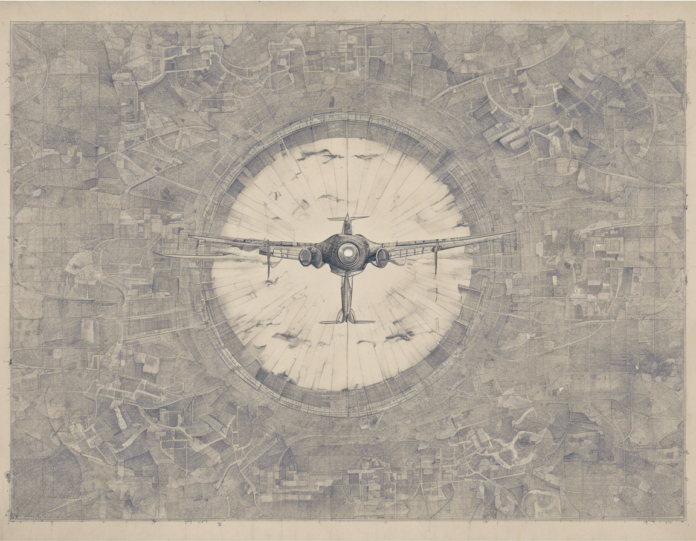Have you ever found yourself gazing up at the sky, admiring the vastness and beauty of the world from a bird’s eye view? Aerial photography allows us to capture these breathtaking moments in a way that is truly unique. Whether you are a professional photographer looking to expand your skills or an amateur seeking to explore a new perspective, aerial photography presents a world of possibilities waiting to be unlocked.
Introduction to Aerial Photography
Aerial photography is the art of taking photographs from an elevated position, typically using drones, helicopters, airplanes, or other airborne devices. This form of photography offers a perspective that is impossible to achieve from the ground, allowing photographers to capture stunning landscapes, architecture, and events from a whole new angle.
Benefits of Aerial Photography
- Unique Perspective: Aerial photography provides a fresh and unique perspective that can transform ordinary scenes into extraordinary works of art.
- High-Quality Images: With advancements in technology, aerial photography can produce high-resolution images that are sharp and detailed.
- Versatility: Aerial photography can be used across various industries, including real estate, tourism, construction, and environmental monitoring.
- Cost-Effective: Using drones for aerial photography is often more cost-effective than traditional methods such as hiring helicopters or airplanes.
Types of Aerial Photography
There are several types of aerial photography, each serving a specific purpose and offering its own set of challenges and rewards.
-
Vertical Aerial Photography: Involves taking images straight down from the air, commonly used in cartography, urban planning, and environmental studies.
-
Oblique Aerial Photography: Captures images at an angle, providing a more three-dimensional view of the subject. This type of photography is often used in landscape photography and real estate marketing.
-
Thermal Aerial Photography: Uses infrared technology to capture images based on heat signatures, commonly used in agriculture, search and rescue operations, and building inspections.
-
Panoramic Aerial Photography: Involves stitching multiple images together to create a wide-angle view of the landscape, offering a more immersive experience for viewers.
Tips for Successful Aerial Photography
-
Plan Your Shots: Before taking off, have a clear idea of the shots you want to capture and the locations you want to explore.
-
Check the Weather: Weather conditions can significantly impact the outcome of your aerial photographs. Aim for clear skies and optimal lighting conditions.
-
Master Your Equipment: Familiarize yourself with your drone or aerial device to ensure smooth operation and maximum control during the flight.
-
Obey Regulations: Be aware of local regulations regarding drone usage and airspace restrictions to avoid legal issues.
-
Experiment with Angles: Don’t be afraid to experiment with different angles and perspectives to create unique and dynamic photographs.
Common Mistakes in Aerial Photography
Even seasoned photographers can make mistakes when delving into the world of aerial photography. Here are some common pitfalls to avoid:
-
Overexposure: Bright skies and harsh sunlight can lead to overexposed images. Adjust your camera settings to compensate for the lighting conditions.
-
Lack of Focus: Ensuring your images are sharp and in focus can be challenging when shooting from the air. Use manual focus and autofocus features to achieve crisp images.
-
Ignoring Composition: Composition still plays a crucial role in aerial photography. Pay attention to framing, leading lines, and points of interest to create visually appealing images.
-
Limited Battery Life: Keep track of your drone’s battery life and always have spare batteries on hand to avoid missing out on important shots.
-
Neglecting Post-Processing: Post-processing is essential for enhancing the quality of your aerial photographs. Experiment with editing software to fine-tune your images.
FAQs (Frequently Asked Questions)
-
Do I need a special license for aerial photography?
In many countries, you may need a license to operate drones for commercial purposes. Check local regulations and obtain the necessary permits before engaging in aerial photography. -
What are the key differences between drones and traditional aerial photography methods?
Drones offer more flexibility, lower costs, and easier access to hard-to-reach areas compared to traditional methods like helicopters or airplanes. -
How can I ensure the safety of my drone during aerial photography sessions?
Always conduct pre-flight checks, maintain a safe distance from obstacles, monitor battery levels, and be mindful of weather conditions to ensure the safety of your drone. -
What are some popular applications of aerial photography in various industries?
Aerial photography is commonly used in real estate marketing, construction site surveys, environmental monitoring, agriculture, and tourism promotion. -
How can I enhance the visual appeal of my aerial photographs?
Experiment with different angles, lighting conditions, and compositions to create visually striking images. Post-processing tools can also help enhance the quality of your photos.
In conclusion, aerial photography opens up a world of creative possibilities for photographers looking to explore new perspectives and capture stunning imagery from above. By understanding the basics, mastering essential techniques, and avoiding common pitfalls, you can embark on an exciting journey into the captivating realm of aerial photography. So, grab your drone, head for the skies, and unlock the beauty that awaits you from a whole new vantage point.

